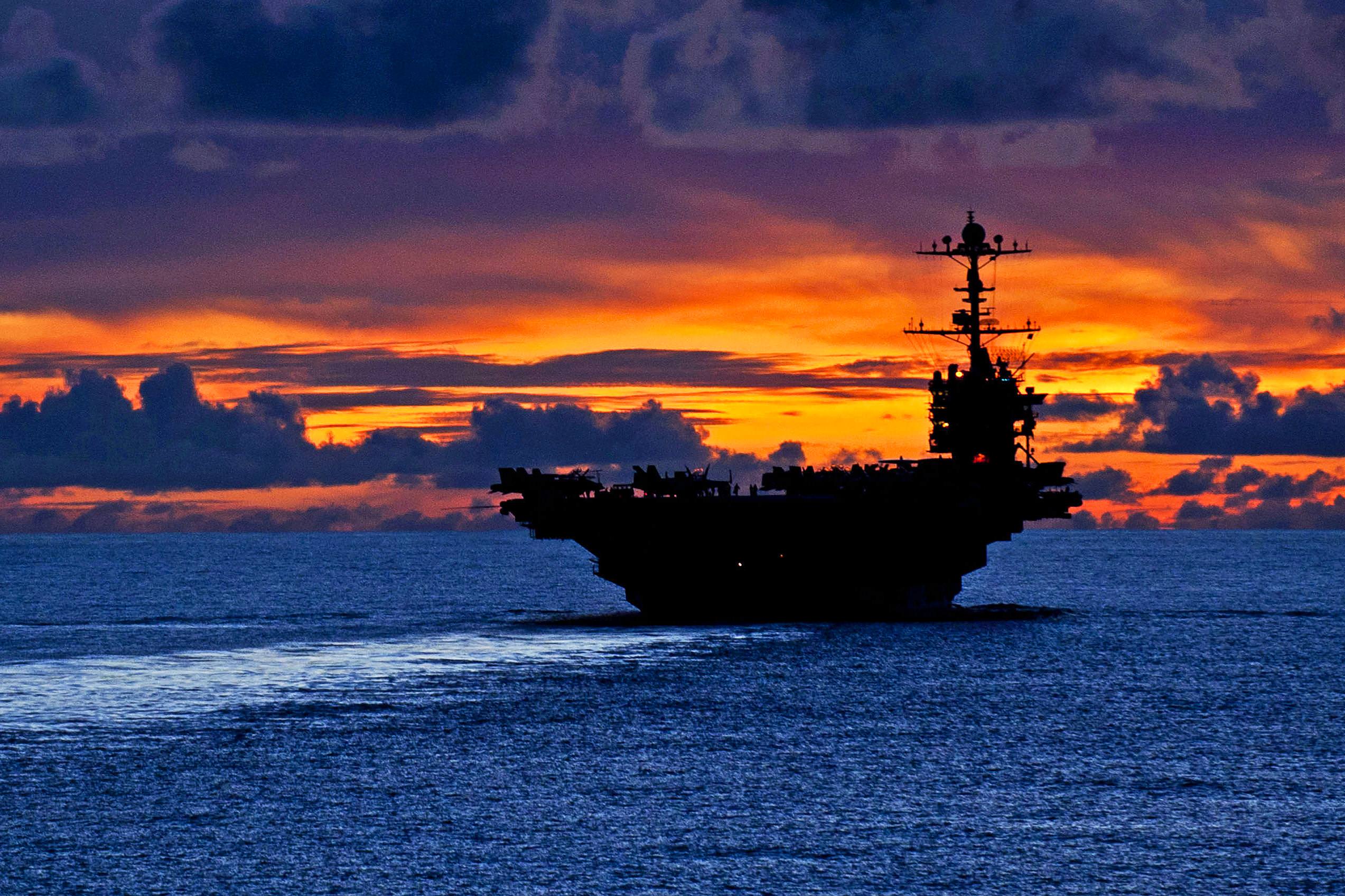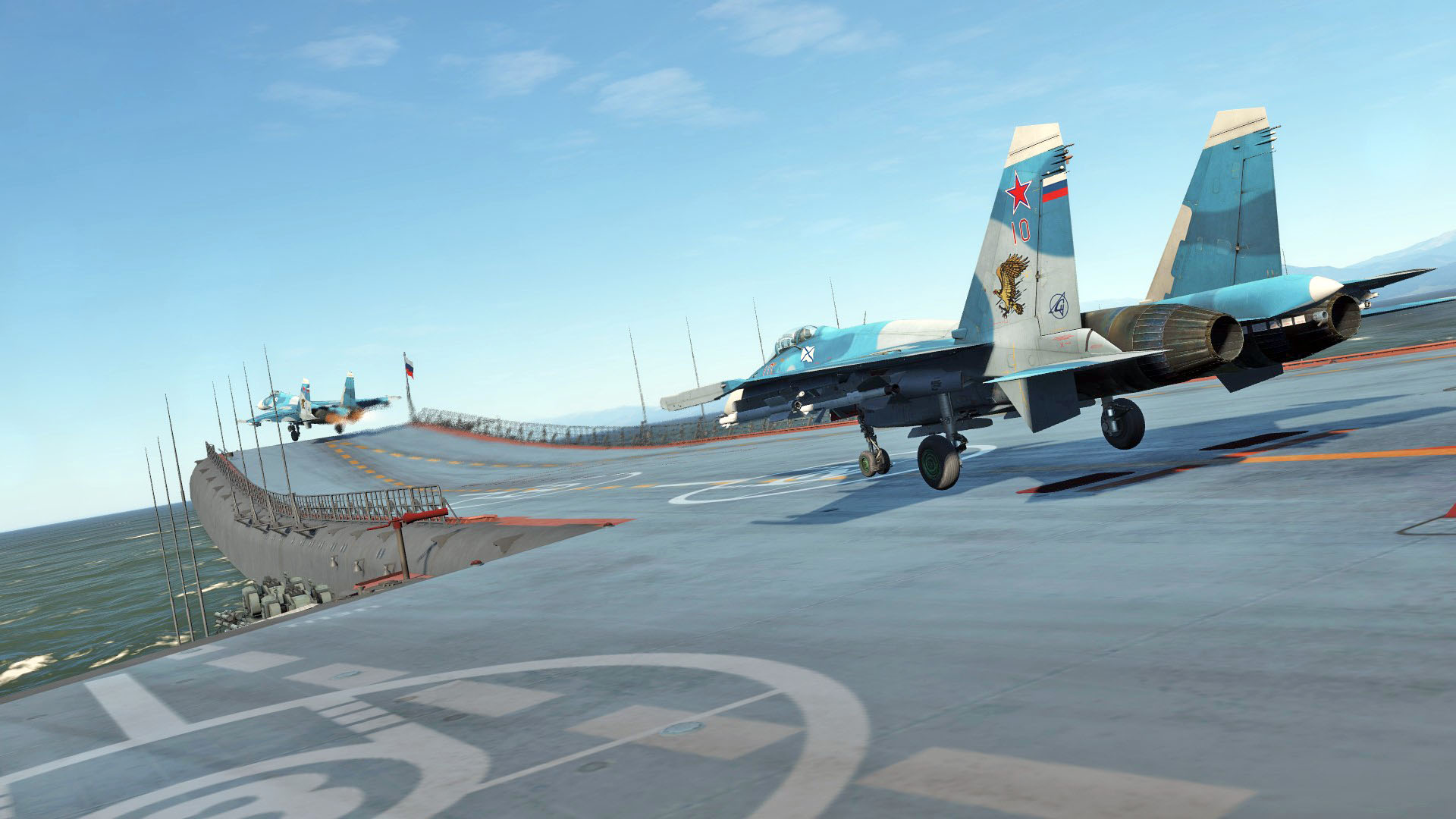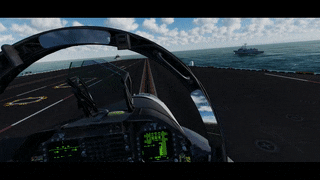Difference between revisions of "Carrier Air Operations"
| Line 27: | Line 27: | ||
The fixed wing propeller planes in the Second World War had enough of a power-to-weight ratio to be able to safely take off from the carrier, but they could not slow down enough in time to safely land on the carrier. A rather simple but ingenious solution was devised: they would span a number of wires across the deck, and bolt a hook to the aircraft that could catch these wires. As soon as a landing aircraft '''trapped''' one of these [https://en.wikipedia.org/wiki/Arresting_gear| '''arrestor wires'''] it would slow down rapidly and be landed safely (although decelerated quite harshly). This system is still in use today (although severely upgraded) and is the method for safely putting fixed wing planes safely on the deck of the aircraft carrier (STOL/STOVL and helicopter aircraft obviously do not require the arresting wires, as they can land semi vertically on the carrier deck). | The fixed wing propeller planes in the Second World War had enough of a power-to-weight ratio to be able to safely take off from the carrier, but they could not slow down enough in time to safely land on the carrier. A rather simple but ingenious solution was devised: they would span a number of wires across the deck, and bolt a hook to the aircraft that could catch these wires. As soon as a landing aircraft '''trapped''' one of these [https://en.wikipedia.org/wiki/Arresting_gear| '''arrestor wires'''] it would slow down rapidly and be landed safely (although decelerated quite harshly). This system is still in use today (although severely upgraded) and is the method for safely putting fixed wing planes safely on the deck of the aircraft carrier (STOL/STOVL and helicopter aircraft obviously do not require the arresting wires, as they can land semi vertically on the carrier deck). | ||
| − | These arrestor wires are not fixed to the carrier itself (as that would put tremendous strain on the wires and the carrier), but are instead attached to a set of hydro-pneumatic systems that dispel the energy in a controlled fashion. Usually this is done by having a ram force a non-compressible fluid through a small diameter control valve, that only lets through so much fluid; this in turn slows the aircraft safely and relatively smoothly. In the early days a barrier (basically a large and strong net) was used as a backup for when an aircraft would fail to trap any wire; nowadays they are reserved for emergencies only. | + | These arrestor wires are not fixed to the carrier itself (as that would put tremendous strain on the wires and the carrier), but are instead attached to a set of hydro-pneumatic systems that dispel the energy in a controlled fashion. Usually this is done by having a ram force a non-compressible fluid through a small diameter control valve, that only lets through so much fluid; this in turn slows the aircraft safely and relatively smoothly. In the early days a barrier (basically a large and strong net) was used as a backup for when an aircraft would fail to trap any wire; nowadays they are reserved for emergencies only. To faciliate the trapping of planes on carriers they have to be equipped with a hook to catch (or trap) one of the wires (typically up to 5 wires are used on carriers): because the landings are also tougher on the undercarriage of the airplanes, most naval based aircraft also have a much sturdier and bigger gear to be able to withstand the shock of landing on the carrier. |
| Line 49: | Line 49: | ||
==== Catapults (CATOBAR) ==== | ==== Catapults (CATOBAR) ==== | ||
| − | Rather than implement the CATOBAR ramp system, the United States (whom pioneered the system) and most NATO countries instead use the [https://en.wikipedia.org/wiki/CATOBAR| '''CATOBAR''' (Catapult Assisted Take-Off But Arrested Recovery ] system. | + | [[File:F18_Carrier_Takeoff.gif|Right|Russian naval aviators making use of ski carrier ramp]] |
| + | |||
| + | Rather than implement the CATOBAR ramp system, the United States (whom pioneered the system) and most NATO countries instead use the [https://en.wikipedia.org/wiki/CATOBAR| '''CATOBAR''' (Catapult Assisted Take-Off But Arrested Recovery ] system. This facilitated a larger | ||
| + | |||
| + | |||
| + | |||
| + | |||
Revision as of 22:08, 12 October 2018
Carrier Air Operations are the various procedures and techniques that make up landing on a moving ship, usually several miles away from any solid ground on which you can land instead. Both fixed-wing and rotary wing aircraft can make use of aircraft carriers to land on, as well as STOL / STOVL aircraft such as the Harrier and the F-35B. Because of the relatively small size (compared to a fully fledged land-based airport) of the carrier, strict procedures and rules are employed to avoid accidents (such as airplanes crashing into one another).
Contents
Carrier Basics
Before we dive headfirst into the procedures and rules associated with carrier air operations, we will first go over the various basics that come into play when operating on a carrier. These include items such as how does a carrier work, what does a carrier look like, and what sort of key features should you pay attention to when you cannot make out left from right when operating on a busy carrier.
How does an aircraft carrier work
Simply put an aircraft carrier is a floating airfield for naval aviators (pilots in the Navy and the Marine Corps) to take-off and land when doing their missions. Normally an airplane can use a fully sized runway for taking off or landing, with the size of these runways landing somewhere in the ballpark of 6000 - 12000 feet; such a size for a runway would produce an enormously long ship and would be unfeasible to have as a ship-based airfield as you would not be able to traverse rivers and canals with such a lengthy ship.
Rather than accommodate the ships length to allow for the lengthy take-off / landing area needed for conventional airplanes, all manner of studies and experiments have led to the design modification of the airplanes and the carriers instead to allow for landing and taking off from the carrier. This started all the way back to the early 1900's, though the carrier became a main staple just prior to / with the beginning of the Second World War.
Arresting gear
The fixed wing propeller planes in the Second World War had enough of a power-to-weight ratio to be able to safely take off from the carrier, but they could not slow down enough in time to safely land on the carrier. A rather simple but ingenious solution was devised: they would span a number of wires across the deck, and bolt a hook to the aircraft that could catch these wires. As soon as a landing aircraft trapped one of these arrestor wires it would slow down rapidly and be landed safely (although decelerated quite harshly). This system is still in use today (although severely upgraded) and is the method for safely putting fixed wing planes safely on the deck of the aircraft carrier (STOL/STOVL and helicopter aircraft obviously do not require the arresting wires, as they can land semi vertically on the carrier deck).
These arrestor wires are not fixed to the carrier itself (as that would put tremendous strain on the wires and the carrier), but are instead attached to a set of hydro-pneumatic systems that dispel the energy in a controlled fashion. Usually this is done by having a ram force a non-compressible fluid through a small diameter control valve, that only lets through so much fluid; this in turn slows the aircraft safely and relatively smoothly. In the early days a barrier (basically a large and strong net) was used as a backup for when an aircraft would fail to trap any wire; nowadays they are reserved for emergencies only. To faciliate the trapping of planes on carriers they have to be equipped with a hook to catch (or trap) one of the wires (typically up to 5 wires are used on carriers): because the landings are also tougher on the undercarriage of the airplanes, most naval based aircraft also have a much sturdier and bigger gear to be able to withstand the shock of landing on the carrier.
Ski ramps (STOBAR)
In the early days of the carrier (World War 2) most carriers were ships over which a flat deck superstructure was built, to be used by the air carrier wing (planes). Although equipped with the previously mentioned arrestor gear and barrier, the take-off procedure was unceremoniously going to full power and simply leaping off the edge of the carrier going at full till. This was possible because of propeller planes having a high thrust-to-weight ratio: they put out a high amount of power whilst the total weight of the aircraft is relatively low.
Although the introduction of the jet engine into (naval) planes increased the produced overall power output, the addition of radar, targeting sensors and other electronics, as well as various types of air-to-air and air-to-ground weaponry meant a significant increase in overall weight. As over time the airplanes got heavier and heavier still, fixed wing aircraft lost their high thrust-to-weight ratio could not reliably take off under their own power any longer. The Russians / Soviet bloc adapted a stratagem of high thrust engines combined with weight restrictions and mandated lower overall weight of their aircraft; they also adopted the ski ramp on their carriers.
Visually and effectively similar to a ramp one might see at a ski resort, the planes line up on the designated positions on the carrier and removable chocks come up from inside the carrier deck to hold the aircraft in place. At the same time the JBD (Jet Blast Deflectors) are raised behind the aircraft: this allows the aircraft to spool up their jet engines to the maximum power setting, afterburning mode: some naval jet aircraft (particularly those of Russian variety) may have an additional engine power override mode reserved for use with carrier takeoffs. This does of course eat into the fuel reserves and also means the engine(s) require maintenance more often.
The ski ramp increases both the altitude (though marginally) and the Angle of Attack / attitude of the aircraft launched: the particular combination allows an aircraft with a high thrust-to-weight ratio to become airborne under its own power (there is no requirement on an external power source). The ramp itself also requires significantly less maintenance than the contemperary CATOBAR system used by most NATO countries and the US.
The largest drawback of the STOBAR ( Short Take-Off But Arrested Recovery ) ramp system overall is the reduced payload that an aircraft can bring with it, lest it gets too heavy to make the take off with the ski ramp system. It is a significant reduction in capability compared to the American catapult system, particularly in the amount of weaponry that can be brought. The fuel reduction is also a downside, but carrier planes typically refuel once airborne anyway to top off their tanks as they are rarely launched with full internal fuel: it does mean you stay on the tanker aircraft longer before you are completely refuelled.
Another drawback is the reduced size of the usable carrier deck, as you can not store aircraft on the ramp: CATOBAR aircraft carriers routinely block one or more of their catapults by parking aircraft on them, as they can still use the remaining catapults for launching aircraft.
Catapults (CATOBAR)
Rather than implement the CATOBAR ramp system, the United States (whom pioneered the system) and most NATO countries instead use the CATOBAR (Catapult Assisted Take-Off But Arrested Recovery system. This facilitated a larger
Carrier Deck Layout
Compared to a more conventional airport, the size on a carrier deck is rather limited and as such you can expect the deck to be packed full of other airplanes and various items during normal carrier operations. This full complement of airplanes resulting in a busy deck requires good communication all-round to prevent accidents (such as crashing into one another from occuring), but there is usually some leeway in that not all aircraft parked on the deck are player-controlled aircraft. The mission editor can choose to put a number of static aircraft as objects on the deck (for display and realism purposes); although they will not be moving, they are still collideable and thus you should take care not to run into them.
Given the size constraints of the aircraft carrier deck



